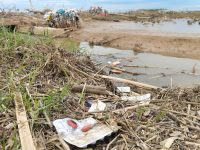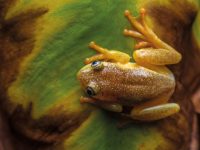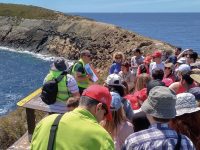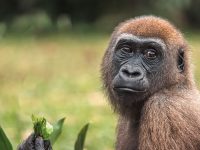Interview with Cristina Mittermeier
«The sea powers our planet»
Conservation biologist and photographer
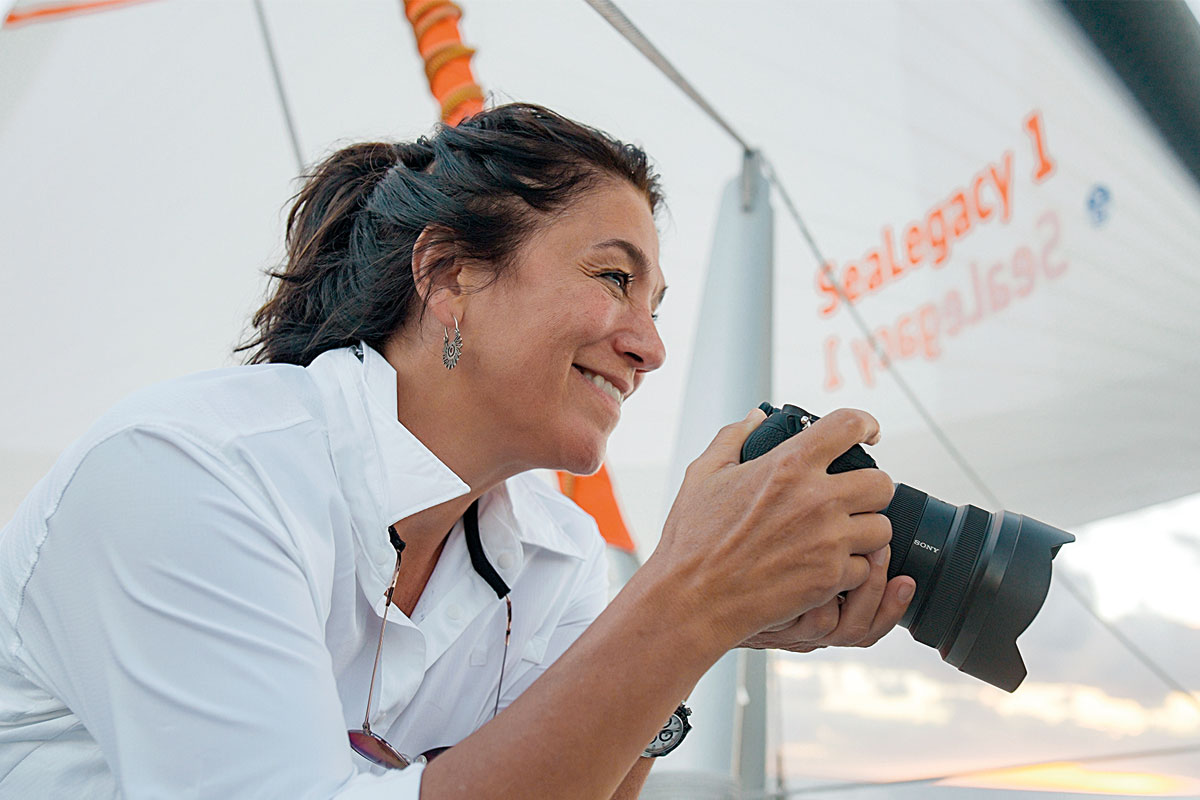
Cristina Mittermeier (Mexico City, 1966) is a marine biologist and one of the most prominent photographers in the field of marine biodiversity conservation. She grew up in Cuernavaca, a town surrounded by mountains and nature. She is an avid reader and confesses that her passion for the sea was greatly influenced by the pirate stories she devoured in her youth, written by Emilio Salgari and featuring Sandokan and his faithful crew.
When the time came to go to university, she chose to study biochemical engineering and specialise in marine resources at the Monterrey Institute of Technology and Higher Education (Mexico). «Those were years when there was hardly any talk of conservation», she remembered in a recent interview. However, her passion for conservation helped her find her first job with the environmental organisation Conservation International. She also studied art photography at the Corcoran College for the Arts in Washington (USA). Her work gave her the opportunity to travel and get to know – and photograph – numerous indigenous communities and their environment. Since then, she has not stopped capturing anything that allows us to reflect on the conservation of our natural and cultural heritage.
Since the late 1990s, she has been a contributor and editor of the series of conservation publications promoted by Cemex and Conservation International. She is a member of the World Photographic Academy and has received numerous awards for her work, including the Mission Award from the North American Nature Photography Association, the Smithsonian Conservation Photographer of the Year Award, and the Image Award for photographers making outstanding contributions, among others.
In 2005 she founded the International League of Conservation Photographers, which brings together a prestigious international group of specialists in the field of photography and video whose work focuses directly on the conservation of the natural environment. Years later, in 2014, she founded the non-profit organisation SeaLegacy with her partner, fellow conservation photographer Paul Nicklen. SeaLegacy is the global marketing, education, and communication agency for the ocean. At the nexus of climate action and sustainable solutions, they create strategies and content that move audiences into action. With the help of a passionate team of world class filmmakers, conservationists, and photographers, they use strategic communications at the intersection of art, science, and conservation to protect and rewild the ocean.
In 2018 she was chosen by National Geographic as one of the adventurers of the year. Her work makes her travel constantly, so the interview takes place online, between meetings and the preparation of new expeditions.
Which came first in your life, your love of conservation or your passion for photography?
Conservation came first. Photography was actually a tool along the way. I am not one of those passionate people who picks up a camera just for the sake of picking it up.
You founded the International League of Conservation Photographers. What are the differences between nature and conservation photography?
I first tried to define the difference between nature and conservation photography in an article for the International Journal of Wilderness, using my background in science. Based on simple observation, maybe I saw a neighbour who was into photography, who would go out and take pictures of flowers, and people called that nature photography. And then there were people like Nick Nichols, who walked over 2,000 km through the jungles of Africa, from Cameroon to Gabon, following elephant transects through a territory that no one had ever seen before, and then he went to the president of Gabon with those photographs and argued for the creation of thirteen national park areas. That makes quite a difference, does it not? But that was also called nature photography. And there is a huge contrast in both the work and the purpose of these two photographers. Taking pictures for the sake of taking pictures is a pleasurable activity. Conservation advocacy work is very hard work.
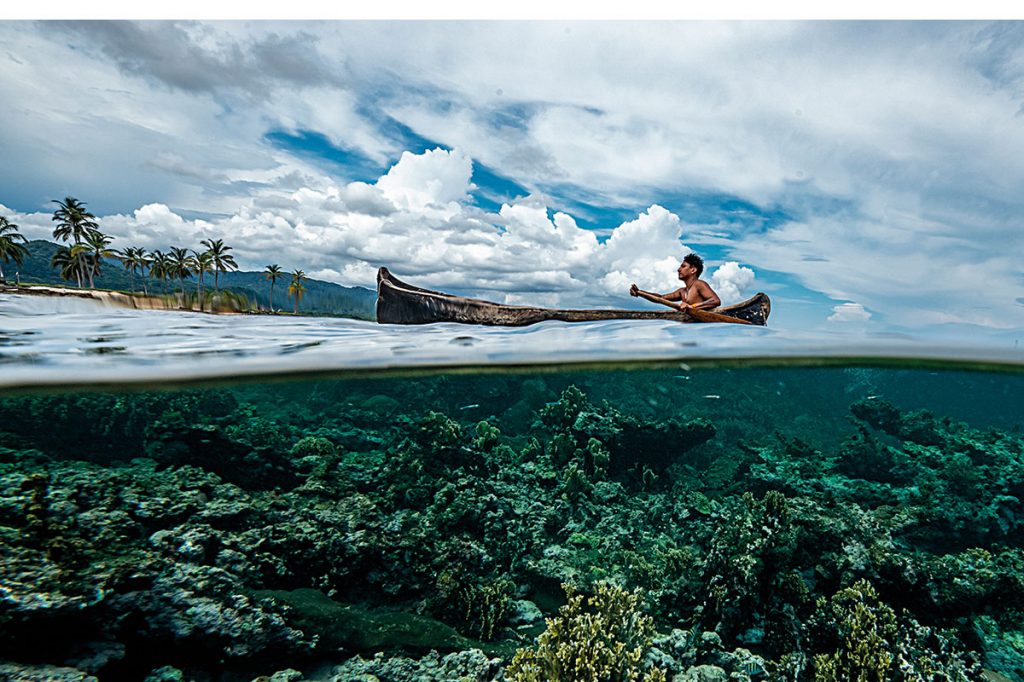
Photo: Cristina Mittermeier
Thanks to the International League of Conservation Photographers, professionals in different parts of the world stay in contact with each other. What prompted you to found it? How did the idea come about?
There were two parts to it. On the one hand, I am the mother of three children and my stepson, who is the eldest, loves birds and has a very rigorous list of the birds he has seen. He persuaded me to go to Tasmania because there were three birds there that he wanted to see. The whole family went there and, on that trip, I discovered the work of a photographer that I found beautiful, sublime. He was Peter Dombrovskis, a very shy man who used a huge old camera. His photographs transmitted a sense of calm. Later, when I began to study his work, I learned that in those years, the 1970s, the Australian government had proposed the construction of two large hydroelectric dams in the Tasmanian highlands. These projects were going to ruin the island’s two largest rivers, and Dombrovskis, through his photographs, very quietly contributed to the campaign that succeeded in defeating the hydroelectric dam projects. And it was a revelation for me to see that you could use photographs as tools to engage the media, to inspire the public, to open the eyes of decision-makers…
And the other part?
On the other hand, I went to all the photography conferences and most professionals there were men, and they were older… And I would raise my hand and ask: «Couldn’t we use our photos to try to protect the places and animals that we care about so much?» And they said no, that was not what they were about. They were mainly interested in filters, apertures, and things like that. I felt a bit boxed in and I thought about starting my own organisation to talk about these issues. I made the first call for the International League of Conservation Photographers and I was really surprised, because the most iconic photographers of our generation came. There was Art Wolfe, ‘Nick’ Nichols, Frans Lanting, Dave Doubilet, etc. They had reached the pinnacle of photography and they were there, in the front row, asking how we could use our photos to change the course of conservation.
In my case [explains Roberto] I try to bring science closer to photography, because I have seen how after publishing very good articles in leading journals, they often receive little media attention. However, if you add photography, your message can reach further. Do you think science and photography are sufficiently connected today?
No, of course not. And for me that was another eureka moment. When I finished university and went to work for Conservation International, I spent five or six years publishing conservation articles in scientific journals that did not transcend the academic environment. And it was not until I worked on the Cemex series of conservation publications with photographer Patricio Robles Gil; he made some beautiful photography books that opened my eyes. I realised that when you talk to people in scientific language, using graphs and statistics, most people cannot understand and it is easier to reject them and say: «I am not interested in that». But when you add photography… Photography is a language we all speak. We are fluent in it. We actually carry a device in our pocket that makes us experts. I realised that the moment we first published those books: it was my written science, accompanied by Patricio’s photographs; and people would come, turn the pages like this [gestures leafing through a book], and they would not read anything, but they did look at the photographs, and they even asked: «Weren’t you afraid? Was it cold?» With photography, that conversation barrier is broken, it is the first step towards dialogue, and people realise that they are interested in the subject, but no one has ever invited them to ask, to participate, to understand.
And how could the scientific community be convinced of that?
We need to show them some case studies. For example, about two years ago I was feeling really down about the state of the planet, when I came across a paper that inspired me. It was called «Rebuilding marine life» and the lead author was researcher Carlos M. Duarte. I told him: «I was very inspired by the message of your paper, but when I tried to read it, it was very difficult». It is scientific language. So I proposed to him: «What if we distilled the information to the four or five most important points and illustrated it with photographs?» Now we are working on this year’s Cemex book and we will see how far his work can go in collaboration with a photographer.
You are very active on social media. How have these information channels changed the way you communicate about photography and conservation? Are they an additional way to bring scientific content to other audiences?
Social media is a daily opportunity. That paper, «Rebuilding marine life», changed my perspective, because I saw that you can take a small section, illustrate it with photography, and put it out into the world. And people will say: «I had no idea sharks were so important». Or «I did not know seagrasses can help us with decarbonisation». Point by point and conveying the information in a conversational way. Nothing inspires people more than a glimpse into the world of the photographer. Most people work at a desk and do not have the opportunity to do that. So it is a call to adventure.
«It was a revelation for me to see that you could use photographs as tools to engage the media, to inspire the public»
A few years ago, you co-founded Sea Legacy. Why do we need to work to protect the oceans?
I struggled to explain it briefly until I met Carlos [Duarte]. Then I realised that it is impossible to ignore the fact that over 70% of our planet is seawater. If we were a vehicle and we opened the bonnet, the engine would be all saltwater, and we still know so little about how that engine works! That is why science is so important. Until recently we knew barely anything about the role it plays in wildlife, in the carbon cycle. This is how we can decarbonise the atmosphere, but we will not be able to do it if we do not know how it works. The sea powers our planet. Almost 80% of the planet’s biodiversity lives in the sea, yet we know very little about it; more than 50% of the oxygen produced on the planet comes from marine productivity… People imagine only seagrasses and mangroves, but it comes from planktonic communities. The chemical reaction of carbon dioxide with seawater, which forms carbonic acid, is very destructive to planktonic communities. We are losing screws in our engine and we do not even realise it.
How do you set a new Sea Legacy expedition in motion?
It starts with the six areas of action that scientists tell us: we need to create more marine protected areas, preserve species, stop the flow of pollutants, rethink how and how much protein we extract from the sea, restore habitats, and reimagine the sea as the solution to climate change. If we find organisations and issues that fall under any of these six headings, we start thinking about an expedition. For example, we are now going out to Revillagigedo, which is in the Mexican Pacific, a small archipelago far off the coast. A couple of years ago, a lot of work was done there. It is a huge national park, completely protected. There is no fishing or mining activity. So it is up to us to go two years after all that was done to tell the story of how wildlife has taken back the area, how tuna populations have tripled, there are sharks, whales… We need to tell those stories so that governments understand that marine protected areas cannot be just 10 km2 in size. This expedition fits into action area number one: we need to create more marine protected areas. How can we encourage that?
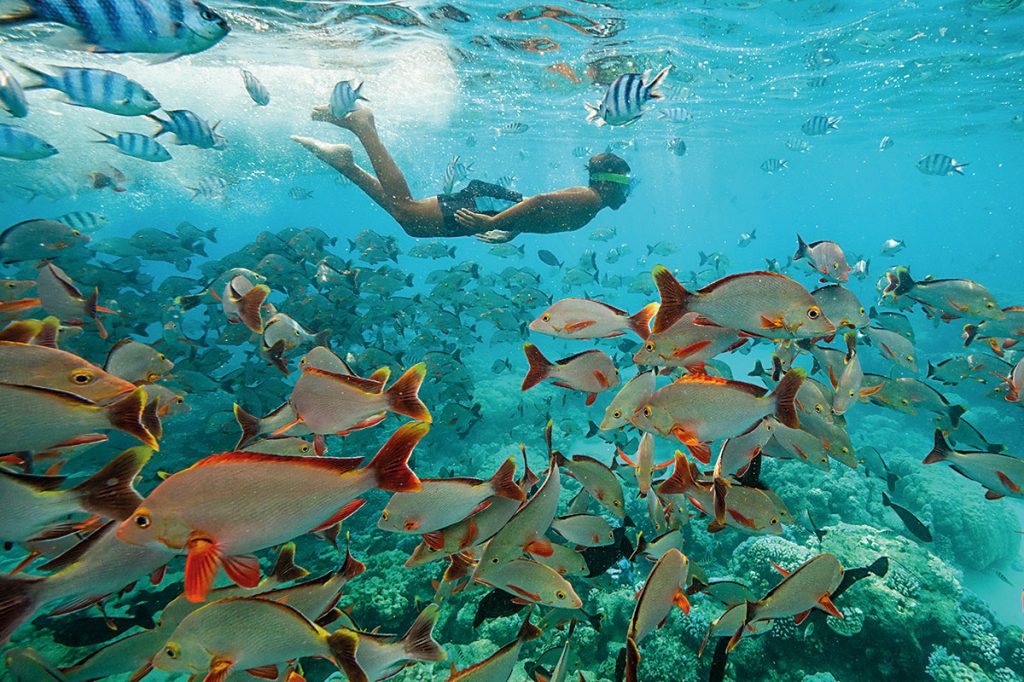
The images in this interview, taken by Cristina Mittermeier, help us to understand and appreciate the diversity of marine ecosystems and raise awareness of the need to preserve them. Her work can be followed on her website (www.cristinamittermeier.com) and social networks.
You try to raise awareness about them?
Our work is in defense and in promotion, because the public matters, but the decision-makers are the environmental departments in many countries, and they have their own agendas and interests. Storytelling really helps inform those kinds of decisions.
And on these expeditions, do you also prepare a scientific report on the area?
It depends, but we almost always go with a scientist. The idea is to create communication materials: video, interviews… It is like the spoonful of sugar to help people see it.
You mentioned the lack of women at those photographers’ meetings you used to attend, and now you are a model for many young women. How has the scene changed over the years?
It has changed a lot. When I started there were just a handful of women, and it is different now. But it is not changing fast enough. To date, of the total 120 photographers for National Geographic, only about 20 are women. I am the only Mexican woman who has worked for them. It is still predominantly male, white, American.
The same is true of photography awards, the percentage of women who win them is still very low.
Very low, yes. Even so, the last edition of the Wildlife Photographer of the Year was won by Karine Aigner. And the Underwater Photographer of the Year in 2021 was also won by a woman [Renne Capozzola].
Sometimes looking at the planet’s problems up close and seeing that nothing is being done can lead to discouragement. Where do you find the strength to continue working for the conservation of the natural world?
From my love for nature, for animals. There really has not been enough investment in communication to make people aware of how serious the issue is, of the enormous danger we face as a species. At a recent meeting of investors [for the promotion of conservation projects] they were talking about the value of aquaculture and so on. And I said: «What we need to do is invest in communication and “sell” the sea for its intrinsic value, for its value for life».

